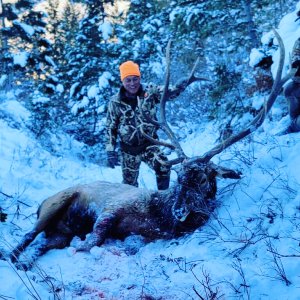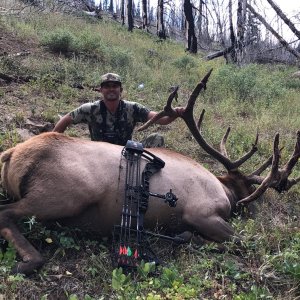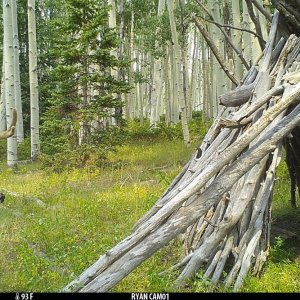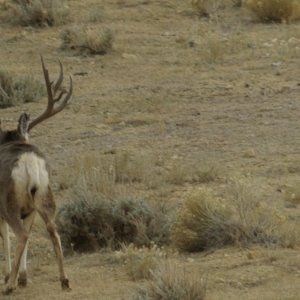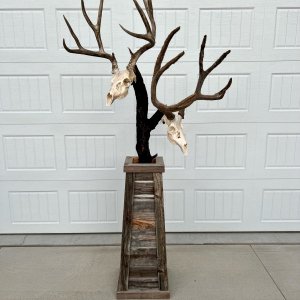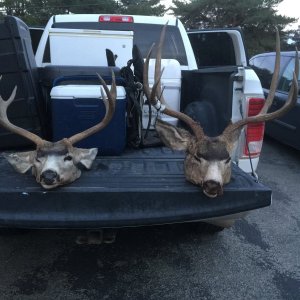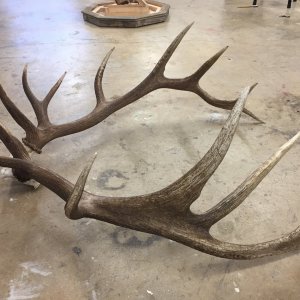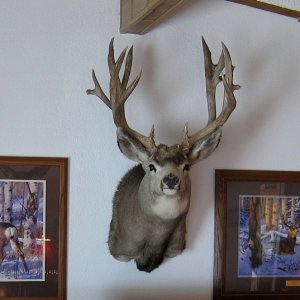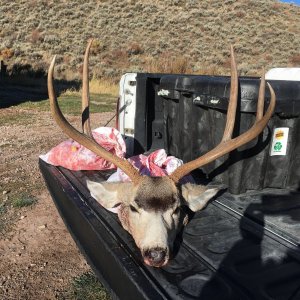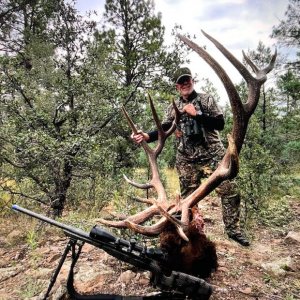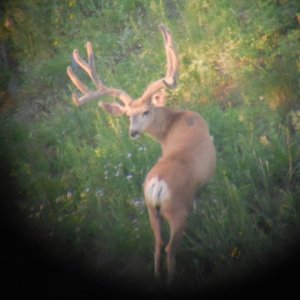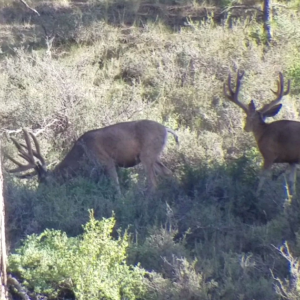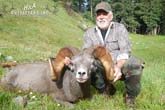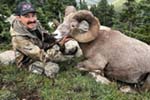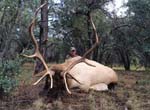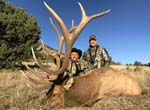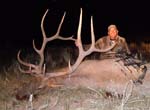Nmelktrout. Your right, I think this is a good discussion, the type of thing I'd hope we'd see more of here on MM.
I can't exactly speak to what happened in CO and if or why or how it may be related to a point restriction. Didn?t it coincide with a significant limitation of overall deer hunters? I know that during NM?s attempt at point restriction, we had the first two years of rainfall eeking towards the historic average in over a decade. I've cut and pasted (below) some discussion of point restriction that I put on here in 2007, along with a couple of new links that are pertinent.
As far as killing does as a part of a very successful deer management program, I admit to being at a complete loss trying to place what programs you might be talking about, and how killing the baby-makers factors in, but I'm open and interested in hearing more about it. For me, life is all about coming to learn my thinking used to be wrong.
I do realize that we can't preach Habitat-habitat-habitat, and see quite clearly that deer populations improve with good rainfall, without recognizing that deer populations are a product of the seasonal and perennial carrying capacity of the country they live. In that context, some would say that killing does increases survivorship of (leaves more to eat for) the bucks. This has been applied to good effect on some deer ranches- usually ones that feed deer, or have crops and really good deer numbers locally. I'd be very cautious of trying to apply this concept state wide or even unit wide for the long-term. In the big picture, every buck comes from a doe, and she can make up to 10 of them in her lifetime. As a manager you'd want as many does as possible on the ground that are able to respond to a year of good rainfall/forage by making more does and bucks.
For those interested in this topic, I'd check out these links. I know it's a lot more than most folks like to read here on the forum. SLOT limits are very interesting to me, and the article on them is worth a read for sure.
XXXXXXXXXXXXXXXX
Here is one of my longwinded soliloquies about antler point restrictions pasted from another post. NM went to a 3- point statewide restriction recently and dumped it for this coming fall. The commission went with the overwhelming outcry from NM hunters who wanted the restriction to ?help the deer herd?. Most hunters here are convinced that the A-P-R has not only helped the deer herd, but the trophy quality. Well, it's rained a little bit around here. I was able to dig up some of the research from the internet, the best studies I couldn't find directly, but there are some great summaries.
?I want to throw this out maybe I'll start another string with it someday but I disagree entirely about the antler point restriction. The (NM) Game Commission changed it back (from 3 point or better) because of the overwhelming science against it. The majority of hunters on this forum have no interest in shooting a forked horn buck, We are a specialized group of hunters with our own pet issues. I contend that you (us) especially should be thankful point restriction is gone. Wildlife ecology is one of the more difficult sciences because there is no way to have a controlled experiment and there are always a thousand things at work on a population, but one thing that's universal (even among deer and other ungulates) is that survivorship increases drastically once an animal becomes an adult. Forkey bucks are not adults, they're juveniles and research consistently shows that (shot during the hunting season or not)a good portion of them will not make it to be a 3/4 pointer, and the more that aren't shot the more that are "wasted." (Think of how many spike elk you see versus the number of first year raghorns- most would say there's a huge drop off in the number they see anecdotally, and we haven't shot spikes for years.) Forkeys are what I want the 40+ thousand other deer hunters in NM to be shooting. The alternative is that all NM hunters are shooting adult bucks and in that scenario trophy quality(age class) and buck:doe ratios have been shown to go in the crapper. I know it's counter-intuitive to some folks. I'll try to get a few of the more keystone studies and post em here for discussion.
We especially should be shooting spikes (deer), they're either poorer genetically or not as well nourished (making them more likely to croak off anyway). I also think spike restriction has a real potential to harm antler genetics. Setting aside the illegal harvest (ground checking) issues, I can't think of any good reason to keep folks from shooting spike elk either.
In the meantime, we have some units we manage for big bucks, some we manage for lots of bucks and some we manage so Joe Blow and his 12 buddies can go drink beer and maybe one of em can stumble across a buck.?
The aforementioned studies?..
* WAFWA- great summary/discussion of (Mule deer) antler point restriction research and other ?Harvest based? population dynamics. (this is a short ?Must read? for Mule deer hunters.)
http://www.createstrat.com/muledeerinthewest/harvest.html
NM questionnaire. ?summarizes some of the research- I concede it's written in a one-sided way, but that don't make it wrong.
http://www.wildlife.state.nm.us/documents/DeerAntlerPointRestrictionsInformation-Questionnaire.pdf
Mississippi (whitetail) Why not the 4-point law? I like this one too-
http://www.mdwfp.com/xNet/Files/Wildlife/Deer/Website/Antler_Criteria_04-2007.pdf
Colorado Elk 1971-1972
http://links.jstor.org/sici?sici=0091-7648(197621)4%3A1%3C3%3AAEOYBE%3E2.0.CO%3B2-Z
GAME AND FISH Magazine article about Washington?s 10 year A-P-R ? sites ALL conflicting viewpoints, great discussion.
http://www.wogameandfish.com/hunting/mule-deer-blacktail-deer-hunting/wo_aa075504a/
http://www.monstermuleys.info/cgi-b..._thread&om=15865&forum=DCForumID6&archive=yes
XXXXXXXXXXXXX
Just so you guys don't think I'm trying to stack the deck, I tried to find one for the opposition.
Pennsylvania New Antler Point Restriction Study
http://www.pgc.state.pa.us/pgc/cwp/view.asp?a=465&q=151294
Are A-P-R working in Pennsylvania?
http://www.lhup.edu/smarvel/Seminar/FALL_2004/Miles_2/PA.htm
I'd like to point out that (in my opinion) this study has NO application for western Mule deer herds. Pennsylvania is a place with too many white tail deer and heard dynamics are basically opposite from most mule deer pops. Also the Penn. Game Commission had tried for a number of years to control the deer population boom by killing more and more bucks (does that make sense to anyone?). Effectively they overwhelmed the survivorship (of juvenile deer)issue by just killing them all- 99% of bucks harvested were yearlings, so they actually had killed ALL of their bucks. A-P-R were started concurrently with a dramatic increase in the number of does killed, subsequently buck to doe ratio increased dramatically, and the ratio of yearlings to adult bucks harvested dropped.
HERE IS SOMETHING INERESTING THOUGH!!!
I mentioned SLOT limits for trophy mule deer management when I originally posted this information on MM in 2007. Just like is used in some warm-water and cold-water fisheries, you keep the little guys (yearlings, spikes), throw back the mid sized (3-4 pointers), and keep the pigs if you get into one. I used it to help explain my theory, but I hadn't known it had been put into practice with big game populations until I saw this study out of Texas. Trophy Mule deer hunters, read this!
SLOT limits Spikes and mature bucks only- Texas (whitetail). Great study.
http://www.tpwd.state.tx.us/huntwild/wild/game_management/deer/antler_restrictions/
